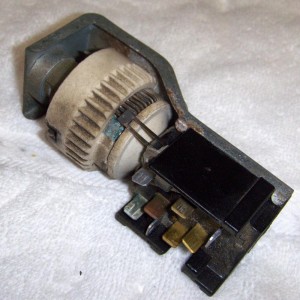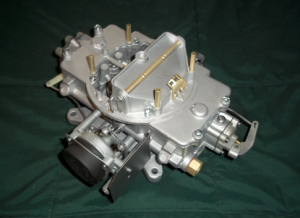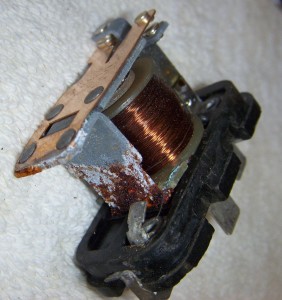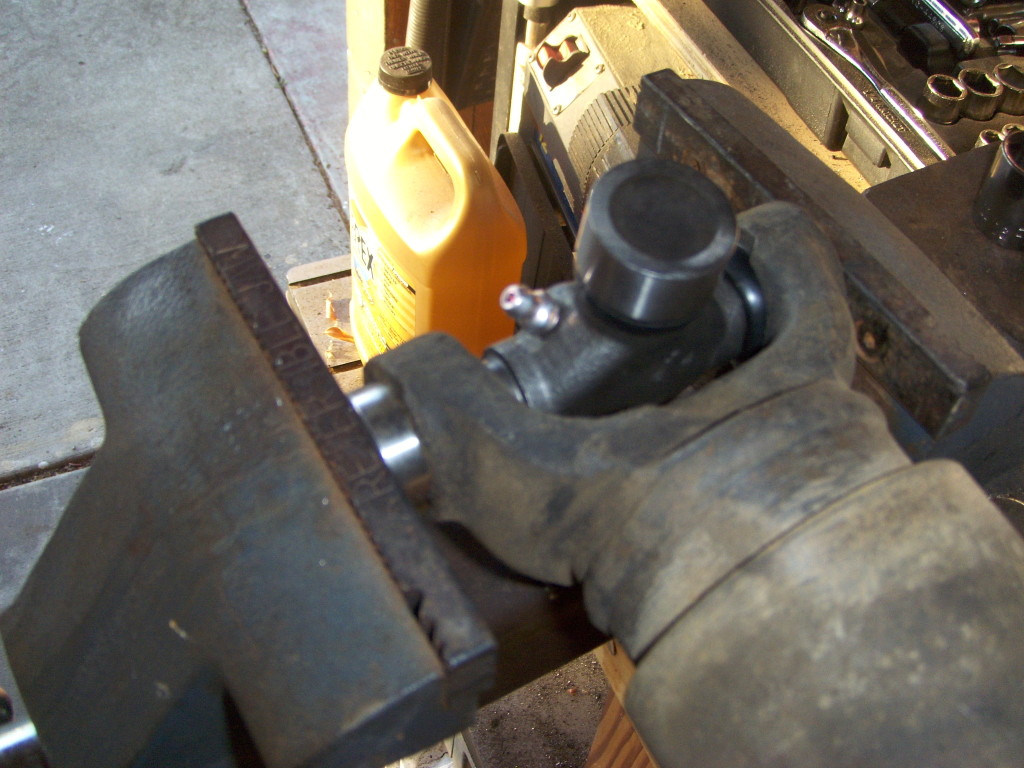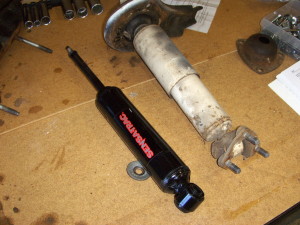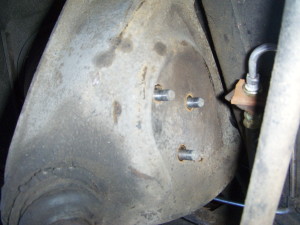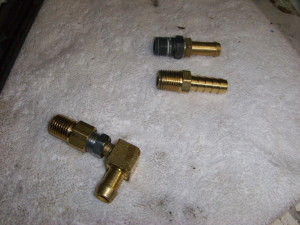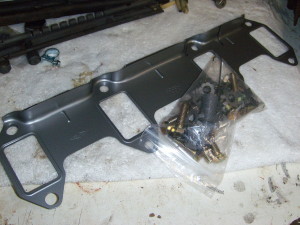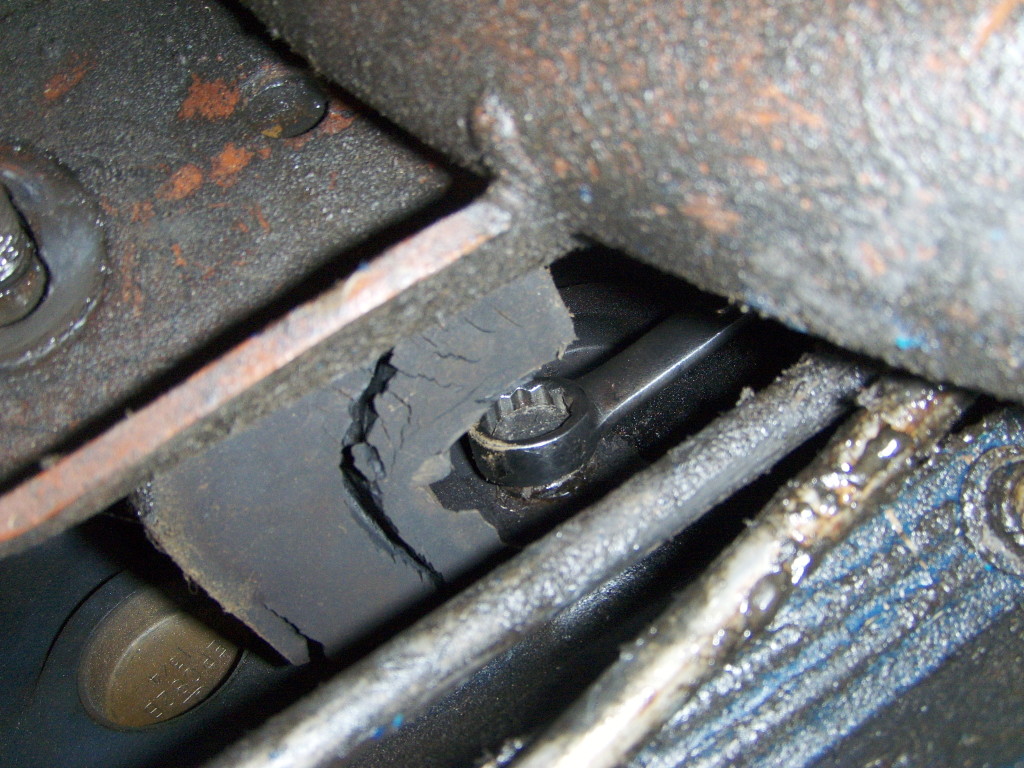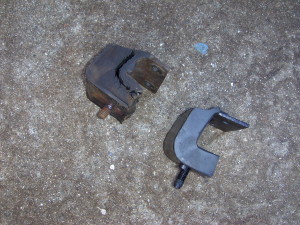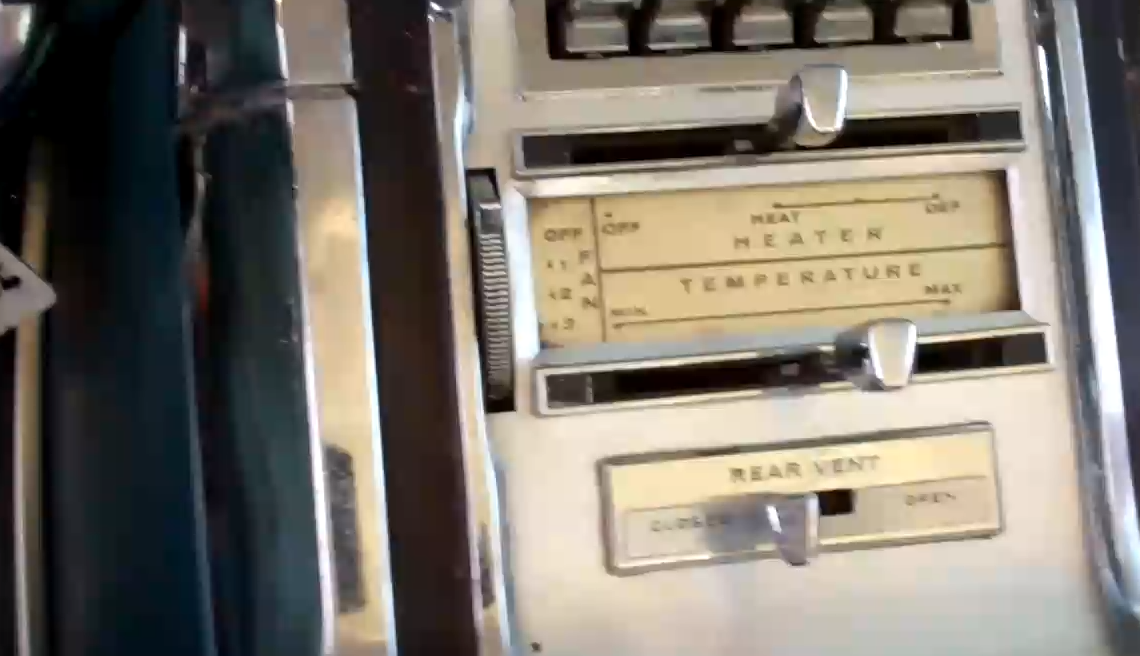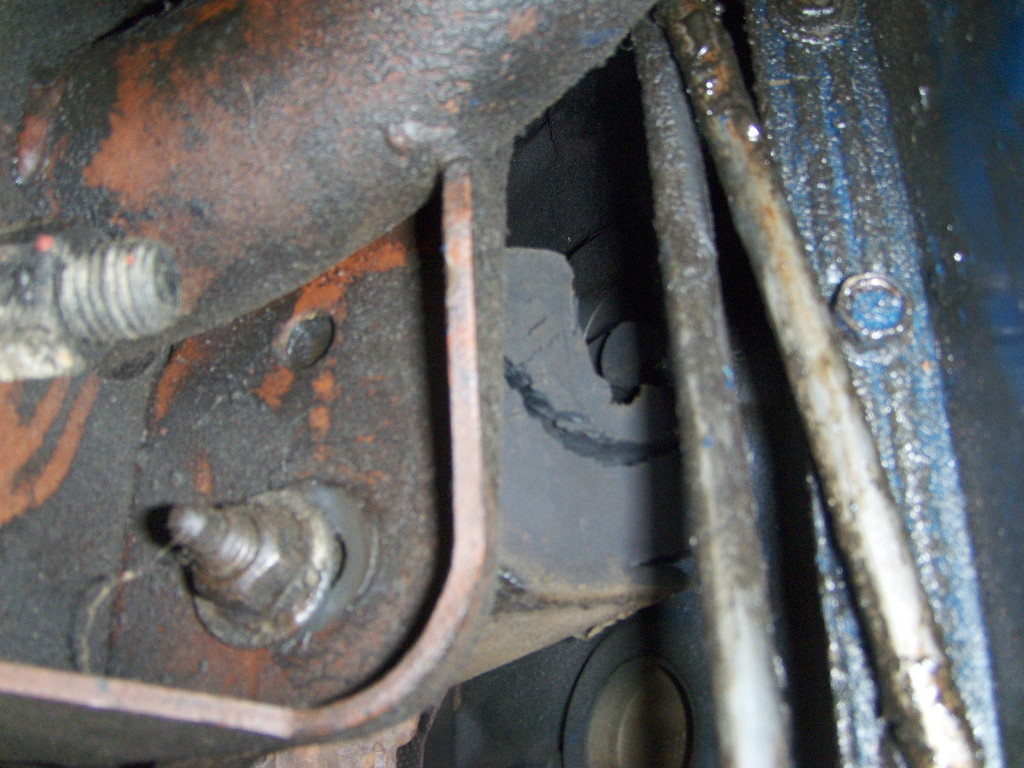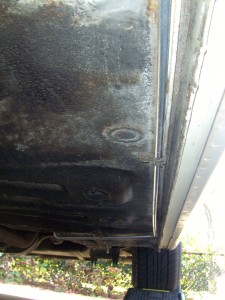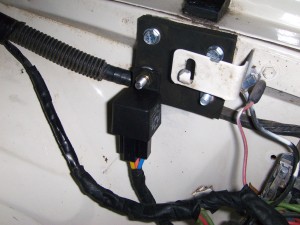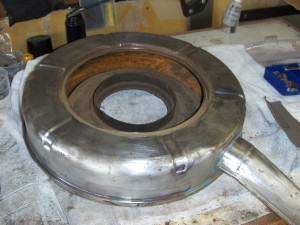
Since I posted last, the T-Bird has been running problem free reliably and I’ve been able to put about 1,000 miles on the odometer. A year ago this time, I had serious doubts that I would ever see a month with no need to get under the hood.
With warm weather here, I’ve had the windows down and driven pretty much anywhere I need, the furthest distance being a 45 mile round trip. Summer is going to be a blast.
During the lull I’ve been assembling all the parts I need to install the “correct” vintage Ford carburetor. An air cleaner assembly has been secured, cleaned and painted, as have the various accouterments for the choke. In addition, I picked up a new PCV valve and a new heater hose.
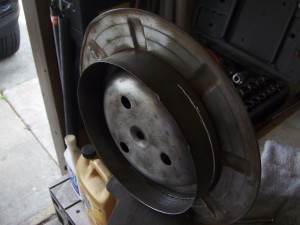
The air cleaner has been a bit of an adventure. There are no part numbers stamped on them, and a wide variety were produced every year. For a California car, I need one with two fittings, one for the choke heater and another for the crankcase breather. I found one that fit the bill, but it is a slightly lower profile than the original.
Inside, there is a series of baffles that serve no discernible purpose. In fact, they look like they would impede airflow pretty well. I cut one of them off, and may remove the other if I get a chance in the next few days.
Cleaned up, it looks pretty good; I suspect it will do the job until the right piece comes along.
Next weekend, I should have a day free to swap out the existing Edelbrock for the new/old Autolite. After that, cruising is on the agenda.

